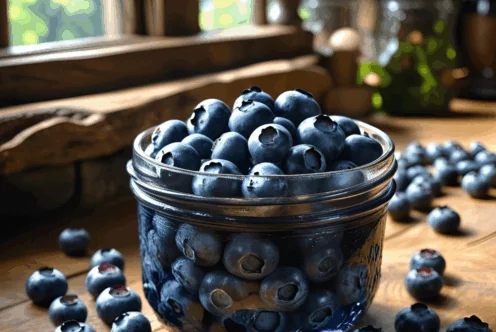Blog
Spinach: The Superfood That Packs a Punch and is Grown Locally in Arizona!

When was the last time you pondered the wonderfulness of spinach—a leafy green so packed with goodness it might just deserve its own superhero cape? This humble veggie has been flexing its nutritional muscles for centuries, and it’s no surprise why Popeye swore by it (even if he did exaggerate the whole “instant biceps” thing).
From heart health to eagle-eyed vision, spinach is a dietary MVP. And guess what? Arizona, of all places, is growing a ton of it—literally. Let’s dig into why spinach is so awesome and how the Grand Canyon State is helping keep our plates piled high with this green gold during the winter months.
A Nutritional Powerhouse
Spinach isn’t just a side dish; it’s a health-boosting multitasker. Registered dietitian nutritionists like Kelsey Kunik can’t stop singing its praises—and for good reason. This leafy wonder is loaded with vitamins A, C, and K, along with folate, iron, calcium, and antioxidants. It’s like nature’s multivitamin, but tastier in a smoothie.
According to the U.S. Department of Agriculture (USDA), one cup of raw spinach contains only about seven calories but delivers 56% of your daily vitamin A, 14% of your vitamin C, and over 180% of your vitamin K requirements (USDA FoodData Central, 2022). That’s a serious nutritional punch that makes it a fantastic choice for health-conscious eaters.
Here are some of the ways you can benefit from adding spinach to your diet:
- Heart Health: Spinach might just be your heart’s new best friend. It’s high in nitrates, which research suggests can help lower blood pressure and improve arterial function, according to the National Institutes of Health. Potassium and folate also contribute to regulating blood pressure and reducing cardiovascular risk, making spinach a heart-healthy addition to any diet.
- Eye Health: Move over, carrots—spinach contains lutein and zeaxanthin, two carotenoids linked to a reduced risk of age-related macular degeneration and cataracts, as highlighted by the Harvard T.H. Chan School of Public Health. It’s like a natural pair of glasses for your peepers, ensuring that you not only see the beauty around you but also contribute to the longevity of your vision.
- Bone Strength: When it comes to bone health, vitamin K is essential, and spinach has it in spades. Vitamin K helps regulate calcium in the bones and contributes to bone mineralization. A 2003 study published in The American Journal of Clinical Nutrition found that vitamin K intake is associated with a reduced risk of hip fractures in women, highlighting spinach’s important role in maintaining strong bones as we age.
- Digestion: Those bioactive compounds in spinach? They’re like a buffet for your gut bacteria. High in fiber and polyphenols, spinach promotes healthy digestion and supports a balanced gut microbiome, as noted in a study from Molecular Nutrition & Food Research. This makes spinach not only a tasty addition to your meals but a crucial element for maintaining gut health.
- Iron Boost: Feeling sluggish? Spinach’s iron content can help perk you up by supporting red blood cell production. While it contains non-heme iron (which is less easily absorbed than meat-based heme iron), cooking spinach can help release more of its iron and increase bioavailability.
Registered Dietitian Megan Huff notes, “Raw spinach is rich in vitamin C, vitamin K, and folate, while cooking spinach reduces its oxalate content, making calcium, iron, and magnesium more bioavailable.” Translation? Whether you eat it fresh in a salad or sautéed with garlic, you’re reaping benefits. Raw gives you a vitamin blast; cooked makes the minerals easier to absorb.
Arizona: Spinach Central?
Now, let’s zoom in on Arizona. When you think of the state, you might picture cacti, scorching deserts, and tumbleweeds—not exactly a spinach paradise, right? But surprise! Arizona’s got a serious spinach game. Thanks to its mild winters, abundant sunshine, and fertile soils in places like Yuma County (nicknamed the “Winter Vegetable Capital of the World”), the state churns out leafy greens like nobody’s business.
According to the Arizona Farm Bureau, Yuma County produces approximately 90% of the leafy greens consumed in the United States during the winter months. Spinach, along with lettuce, kale, and arugula, is among the most common crops grown from November through March.
The USDA reports that Arizona dedicates tens of thousands of acres annually to leafy greens. Though exact spinach acreage is bundled with other leafy types, estimates from the Arizona Leafy Greens Marketing Agreement (AZ LGMA) suggest spinach comprises a significant portion of the 50,000+ acres of leafy greens harvested in the region every winter.
Arizona’s strategic irrigation from the Colorado River, strict agricultural safety standards, and favorable climate make it ideal for growing spinach that is shipped across the nation within 24 hours of harvest. It’s a farm-to-fork marvel that ensures the freshest greens are just a meal away.

Fun Spinach Facts to Impress Your Friends
- Popeye’s Secret Weapon: Spinach’s iron reputation got a boost from a typo in the 1870s. A German scientist misplaced a decimal point, making it seem like spinach had 10 times more iron than it actually did. The myth stuck around, helping Popeye become Spinach’s most famous fan and giving the vegetable its well-deserved status as a powerhouse of nutrition.
- Space Spinach: In 2019, astronauts aboard the International Space Station grew spinach in microgravity. It turns out that spinach adapts well to vertical farming in limited-light, soil-free conditions. This exciting development offers potential for sustainable food sources in space missions and reminds us that this superfood isn’t just for earthlings anymore.
- Color Chameleon: It’s chlorophyll, which not only gives spinach its striking appearance but also provides detoxifying properties. Spinach is rich in antioxidants, such as Vitamin E and flavonoids, that help protect your body from oxidative stress and inflammation. Eating a diet high in vibrant fruits and vegetables like spinach can contribute to overall health and longevity.
How to Sneak More Spinach Into Your Life
Spinach is incredibly versatile, making it an excellent ingredient in a wide variety of dishes. Here are some delightful ways to incorporate this superfood into your meals:
- Spinach Salad: Toss fresh spinach with your favorite salad toppings—think nuts, berries, and feta cheese. Drizzle with a vinaigrette or homemade dressing for a refreshing side dish or main course.
- Sautéed Spinach: Quickly sauté fresh spinach in olive oil with garlic for a delicious side dish. This method not only brings out the flavor but also helps reduce the oxalate content, elevating the spinach’s nutrient availability.
- Spinach Smoothie: Blend spinach into your morning smoothie for an added boost of nutrients. Pair it with bananas, yogurt, and a splash of almond milk, and you’ve got a creamy treat that packs a punch.
- Spinach and Cheese Stuffed Chicken: For a heartier meal, stuff chicken breasts with a mixture of cooked spinach, cream cheese, and herbs. Bake until tender and serve with a side of roasted vegetables for a complete dinner.
- Spinach Quiche: A classic dish that never gets old, quiche is perfect for breakfast, lunch, or dinner. Combine eggs, cheese, and sautéed spinach in a pie crust for a flavorful, nutritious meal.
- Baked Into Casseroles: Mix chopped spinach into casseroles, enchiladas, and stuffed shells.
- Spinach Pesto: Blend fresh spinach with garlic, nuts, olive oil, and Parmesan cheese to make a vibrant pesto sauce. Toss it with pasta, spread it on sandwiches, or use it as a dip.
- Green Hummus: Blend spinach into your favorite hummus recipe for a colorful, antioxidant-rich twist.
- Tacos and Quesadillas: Add spinach to fillings for an easy nutrient boost.
- Spinach Scrambled Eggs: Toss the spinach in just as you finish the scramble, and the leaves lightly wilt, creating a wonderful blend of bright green and golden eggs. It’s a five-minute fix with serious nutrient payoff.
- Wrap it up: Use spinach leaves instead of tortillas or add a handful inside wraps and burritos.
Spinach: A Sustainable Choice
In addition to its health benefits, spinach is also a sustainable choice. It has a relatively short growing season and produces a high yield, making it an efficient crop for farmers. By choosing spinach, you’re not only benefiting from its nutritional value but also supporting environmentally friendly farming practices.
Closing Thoughts: Arizona’s Green Gold
As we dig deeper into the world of spinach, it becomes clear that this leafy green is more than just a salad filler. With its impressive nutritional profile, heart-healthy benefits, spinach truly deserves its recognition as a superfood. Whether you enjoy it raw, cooked, or blended into a smoothie, incorporating spinach into your diet can contribute to your overall health and wellness.
So the next time you’re at the grocery store or farmers market, don’t overlook the power of spinach. When you’re chowing down on a spinach salad or sipping a green smoothie, give a little nod to Arizona. Our desert state’s farmers are out there, growing acres of this leafy legend so you can keep your heart, eyes, and gut in top shape. Spinach is the green gift that keeps on giving—and Arizona’s helping make it happen!
By Julie Murphree, Arizona Farm Bureau Director of Strategic Communications


















